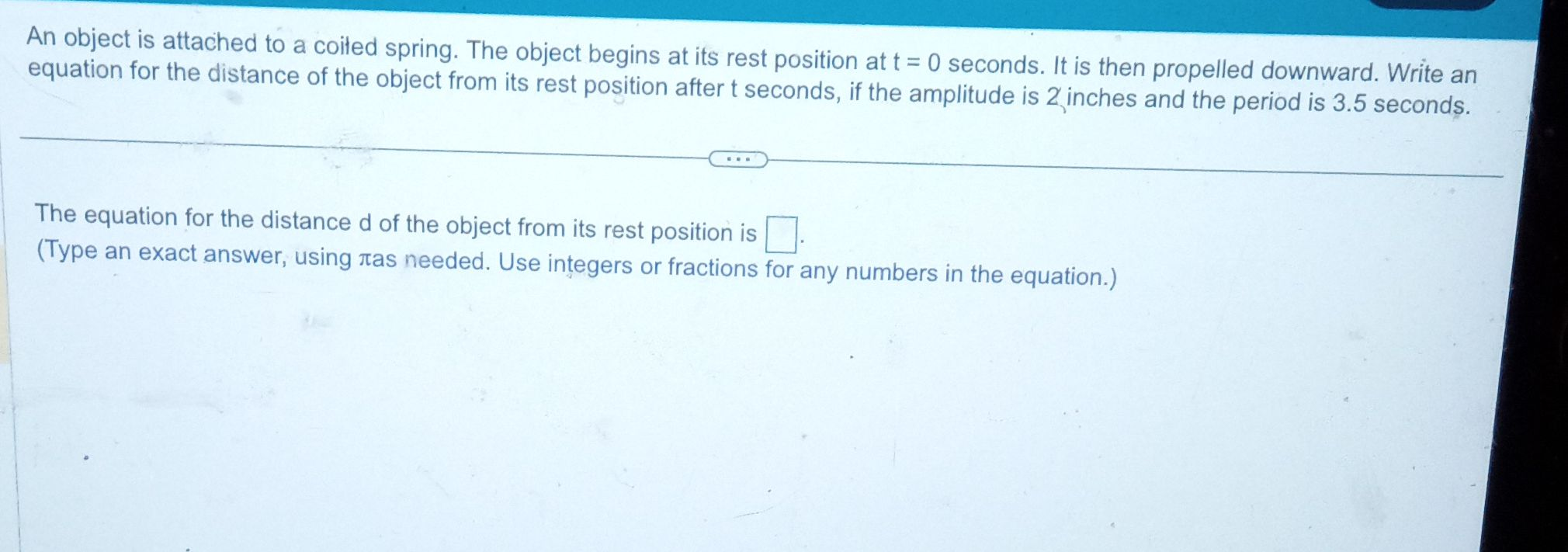AI tutor
Welcome to Bytelearn!
Let’s check out your problem:

An object is attached to a coiled spring. The object begins at its rest position at seconds. It is then propelled downward. Write an equation for the distance of the object from its rest position after seconds, if the amplitude is , inches and the period is . seconds.The equation for the distance of the object from its rest position is .(Type an exact answer, using as needed. Use integers or fractions for any numbers in the equation.)
Full solution
Q. An object is attached to a coiled spring. The object begins at its rest position at seconds. It is then propelled downward. Write an equation for the distance of the object from its rest position after seconds, if the amplitude is , inches and the period is . seconds.The equation for the distance of the object from its rest position is .(Type an exact answer, using as needed. Use integers or fractions for any numbers in the equation.)
- Write Equation: To write the equation for the distance of the object from its rest position, we need to use the formula for simple harmonic motion, which is , where is the amplitude and is the period.
- Substitute Amplitude: The amplitude is given as inches, so we will substitute into the equation.
- Substitute Period: The period is given as seconds, so we will substitute into the equation.
- Substitute Values: Now we substitute the values into the equation: .
- Calculate Coefficient: We can simplify the equation by calculating the coefficient of inside the cosine function. The coefficient is .
- Simplify Coefficient: The simplified coefficient is , which we can leave in terms of for an exact answer.
- Final Equation: The final equation for the distance of the object from its rest position after seconds is .
More problems from Identify discrete and continuous random variables
QuestionGet tutor help
QuestionGet tutor help
QuestionGet tutor help
QuestionGet tutor help
QuestionGet tutor help
QuestionGet tutor help
QuestionGet tutor help
QuestionGet tutor help
QuestionGet tutor help
QuestionGet tutor help
